THCA Flower Genetics Bank: Preserving Oregon's Hemp Heritage
Oregon has long stood as a beacon of agricultural innovation and environmental stewardship in the Pacific Northwest. From its fertile valleys to its pioneering spirit in sustainable farming, the state has consistently led the way in agricultural preservation efforts. Today, this legacy extends into one of the most crucial yet underappreciated aspects of modern hemp cultivation: hemp genetics preservation. The establishment of comprehensive genetic banks dedicated to preserving Oregon's rich hemp heritage represents not just an investment in agricultural biodiversity, but a commitment to ensuring that future generations will have access to the extraordinary variety of THCA flower strains that have made Oregon synonymous with premium hemp cultivation.
The concept of genetic preservation in agriculture isn't new, but its application to hemp cultivation represents a fascinating intersection of traditional farming wisdom and cutting-edge agricultural science. As the hemp industry continues to evolve and expand, the importance of maintaining genetic diversity becomes increasingly apparent. Without dedicated preservation efforts, we risk losing unique strains that have taken decades or even centuries to develop, each carrying distinct characteristics that contribute to the rich tapestry of hemp genetics available today.
The Foundation of Oregon's Hemp Legacy
Oregon's relationship with hemp cultivation stretches back further than many realize, rooted in the state's agricultural traditions and favorable growing conditions. The Pacific Northwest's unique climate, characterized by mild, wet winters and warm, dry summers, creates an ideal environment for hemp cultivation. This natural advantage, combined with Oregon's progressive agricultural policies and innovative farming community, has positioned the state as a leader in hemp genetics development and preservation.
The oregon strain library concept emerged from the recognition that Oregon's hemp varieties represent decades of selective breeding, environmental adaptation, and cultivar development. These strains have been shaped by the state's unique terroir – the combination of soil, climate, and cultivation practices that gives Oregon hemp its distinctive characteristics. From the coastal regions with their maritime influence to the high desert areas with their intense sunlight and dramatic temperature variations, Oregon's diverse microclimates have contributed to the development of hemp varieties with remarkable genetic diversity.
This genetic wealth didn't happen overnight. Oregon's hemp heritage is the result of generations of cultivators who understood the importance of selecting for specific traits while maintaining genetic diversity. Early hemp farmers in Oregon focused on developing varieties that could thrive in the state's specific conditions while producing the desired cannabinoid profiles and growth characteristics. This patient, methodical approach to strain development has created a genetic library that represents some of the most resilient and potent hemp varieties in the world.
Understanding Genetic Diversity in Hemp Cultivation
Genetic diversity hemp preservation is fundamentally about maintaining the broadest possible range of genetic traits within hemp populations. This diversity serves as insurance against future challenges, whether they come in the form of new pests, changing climate conditions, or evolving consumer preferences. When we preserve genetic diversity, we're essentially maintaining nature's toolkit for adaptation and survival.
In hemp cultivation, genetic diversity manifests in numerous ways. Different strains may exhibit varying resistance to specific pests or diseases, adapt better to particular soil conditions, or produce unique cannabinoid and terpene profiles. Some varieties might excel in indoor thca flower production environments, while others thrive as outdoor thca flower varieties. Still others might represent the perfect balance for greenhouse thca flower cultivation, combining the controlled environment benefits of indoor growing with the natural light advantages of outdoor cultivation.
The loss of genetic diversity in any crop species represents an irreversible setback for agriculture. Once a particular genetic line is lost, the unique combination of traits it carried cannot be recreated. This is why genetic preservation efforts are so critical – they represent our commitment to maintaining the full spectrum of possibilities that nature and human cultivation have created over time.
Hemp's genetic diversity is particularly complex due to the plant's dioecious nature (having separate male and female plants) and its history of widespread cultivation across diverse environments. This has resulted in populations with remarkable genetic variation, each adapted to specific conditions and selected for particular traits. Preserving this diversity means maintaining not just the popular commercial varieties, but also the lesser-known strains that may carry unique genetic traits crucial for future breeding programs.
Heritage Hemp Strains: Living Links to Agricultural History
Heritage hemp strains represent more than just genetic material – they're living connections to agricultural history and cultural heritage. These varieties often carry names that tell stories of their origins, whether they reference geographic locations, notable cultivators, or distinctive characteristics that made them memorable to the farming communities that developed them.
In Oregon, heritage strains often reflect the state's agricultural evolution. Some varieties trace their lineage back to the early days of Pacific Northwest farming, when hemp was grown primarily for fiber production. Others represent more recent developments, emerging from the craft cultivation movement that has made Oregon famous for its artisanal approach to agriculture. Each of these strains carries genetic information that has been shaped by decades or even centuries of selection and adaptation.
The preservation of heritage strains serves multiple purposes beyond maintaining genetic diversity. These varieties often possess unique characteristics that may not be immediately apparent but could prove invaluable in future breeding programs. A heritage strain that shows particular resistance to a specific environmental stress, for example, might become crucial if climate change or new pest pressures make those traits more important for commercial cultivation.
Heritage strains also serve as genetic baselines, providing reference points for understanding how hemp genetics have evolved over time. By maintaining these varieties in their original forms, researchers and breeders can better understand the genetic changes that have occurred in more modern cultivars and make more informed decisions about future breeding directions.
The cultural significance of heritage strains cannot be overlooked either. These varieties represent the accumulated wisdom of generations of cultivators, each of whom contributed to the genetic legacy we inherit today. Preserving these strains honors that legacy while ensuring that future generations will have access to the same genetic resources that have made Oregon hemp cultivation so successful.
The Science of Seed Banking and Genetic Conservation
Seed banking thca represents one of the most reliable methods for long-term genetic preservation. Unlike living plants, which require constant care and are vulnerable to environmental disasters, properly stored seeds can maintain viability for decades or even centuries under the right conditions. This makes seed banking an essential component of any comprehensive genetic conservation program.
The process of creating and maintaining a seed bank involves sophisticated understanding of plant biology, storage technologies, and genetic management. Seeds must be harvested at optimal maturity, processed to remove excess moisture, and stored under carefully controlled temperature and humidity conditions. Modern seed banks often employ ultra-low temperature storage, sometimes using liquid nitrogen to maintain seeds at temperatures that essentially stop all biological processes, ensuring genetic material remains viable for extended periods.
Genetic conservation hemp efforts go beyond simple storage, however. Effective conservation requires ongoing monitoring of seed viability, periodic testing of stored material, and systematic regeneration of aging seed stocks. This regeneration process is particularly important for maintaining genetic integrity, as it allows conservators to verify that stored material still carries the expected genetic characteristics and to refresh seed stocks before viability declines.
Modern genetic conservation also incorporates advanced technologies like cryopreservation and tissue culture techniques. These methods can preserve genetic material in forms other than seeds, including pollen, tissue samples, and even DNA extracts. This multi-faceted approach to conservation provides redundancy and insurance against the loss of valuable genetic material.
The scientific principles underlying genetic conservation extend to understanding population genetics and breeding strategies. Effective conservation requires maintaining sufficient genetic diversity within preserved populations to prevent inbreeding depression and genetic drift. This means conserving not just individual superior plants, but entire populations that represent the full genetic diversity of particular strains or varieties.
Oregon's Leadership in Hemp Genetic Preservation
Strain preservation oregon efforts have benefited from the state's unique combination of agricultural expertise, research institutions, and progressive regulatory environment. Oregon's universities have long been leaders in plant genetics research, and this expertise has naturally extended to hemp as the crop has gained commercial importance.
The Oregon State University hemp research program, for example, has been instrumental in developing scientific approaches to hemp cultivation and genetics. Their work on cultivar development, pest management, and genetic characterization has provided the foundation for evidence-based conservation efforts. This academic involvement ensures that Oregon's genetic preservation efforts are grounded in solid science rather than just traditional farming wisdom.
Oregon's hemp industry has also embraced collaborative approaches to genetic preservation. Rather than viewing genetic resources as proprietary assets to be hoarded, many Oregon cultivators recognize the collective benefit of maintaining diverse genetic resources. This collaborative spirit has led to the development of shared genetic repositories and cooperative breeding programs that benefit the entire industry.
The state's regulatory environment has also supported genetic preservation efforts. Oregon's hemp regulations recognize the importance of maintaining genetic diversity and have been structured to support rather than hinder conservation efforts. This supportive regulatory framework has allowed Oregon to develop comprehensive genetic preservation programs that serve as models for other states and regions.
Oregon's climate and geography provide natural advantages for genetic preservation as well. The state's diverse growing regions allow for the maintenance of genetic material under various environmental conditions, helping to preserve the full range of genetic expression for different varieties. This environmental diversity also supports ongoing adaptation and selection, ensuring that preserved genetic material remains relevant and viable for future cultivation.
The Role of Biodiversity in Hemp Cultivation
Hemp biodiversity encompasses more than just the variety of strains available for cultivation. It includes the complex web of relationships between hemp plants, their associated microorganisms, beneficial insects, and the broader ecosystem in which they grow. This biological complexity is crucial for sustainable hemp cultivation and represents another important aspect of genetic preservation efforts.
Understanding hemp biodiversity requires recognizing that individual plants don't exist in isolation. Hemp roots form associations with mycorrhizal fungi that help plants access nutrients and water more efficiently. The above-ground portions of plants provide habitat and food sources for beneficial insects that can help control pests naturally. This biological complexity means that preserving hemp genetics also involves preserving the broader biological communities that support hemp cultivation.
Oregon's approach to hemp cultivation has traditionally embraced this ecological perspective. Many Oregon hemp farms incorporate biodiversity-supporting practices like cover cropping, beneficial insect habitat creation, and soil health management. These practices not only support current cultivation but also help maintain the broader biological diversity that genetic preservation efforts depend upon.
The relationship between genetic diversity and ecological resilience is particularly important in hemp cultivation. Genetically diverse hemp populations are better able to withstand environmental stresses, pest pressures, and disease challenges. This resilience is enhanced when hemp cultivation occurs within biodiverse agricultural systems that provide natural support for plant health and productivity.
Modern research has revealed the importance of plant-associated microbiomes in determining plant health and productivity. Different hemp varieties may associate with different microbial communities, and these associations can be crucial for optimal plant performance. Preserving hemp genetic diversity therefore also involves understanding and maintaining these complex biological relationships.
Advancing THCA Flower Cultivation Through Genetic Resources
THCA flower cultivation represents one of the most sophisticated applications of hemp genetics, requiring precise understanding of the genetic factors that influence cannabinoid production, flower development, and overall plant performance. The availability of diverse genetic resources is crucial for advancing cultivation techniques and developing new varieties that meet evolving market demands.
The production of high-quality THCA flowers requires careful attention to numerous genetic and environmental factors. Different genetic lines may exhibit varying responses to cultivation techniques, environmental conditions, and harvest timing. Access to diverse genetic resources allows cultivators to select varieties that are best suited to their specific growing conditions and production goals.
Premium indoor thca production, for example, benefits from genetic lines that have been selected for performance under controlled environment conditions. These varieties may exhibit compact growth habits, efficient light utilization, and consistent cannabinoid production under artificial lighting. The development of such specialized varieties depends on having access to broad genetic resources that can be selected and bred for specific indoor cultivation characteristics.
Outdoor and greenhouse cultivation present different challenges and opportunities, requiring genetic resources adapted to different environmental conditions. Outdoor varieties must be able to withstand natural weather variations, while greenhouse varieties need to perform well under semi-controlled conditions that combine natural light with environmental protection.
The genetic basis of THCA production is complex, involving multiple genes that influence not only the quantity of THCA produced but also the timing of production, the stability of the cannabinoid, and its interaction with other plant compounds. Understanding these genetic relationships requires access to diverse genetic material that can be studied and compared under controlled conditions.
Genetic Resources and Future Innovation
Genetic resources hemp preservation represents an investment in future innovation potential. As our understanding of hemp genetics continues to advance, preserved genetic material will become increasingly valuable for developing new varieties that address emerging challenges and opportunities.
Climate change presents both challenges and opportunities for hemp cultivation. As growing conditions change, genetic material that is currently considered marginal or unimportant may become crucial for maintaining productive cultivation. Preserved genetic resources provide the raw material for developing climate-adapted varieties that can maintain productivity under changing environmental conditions.
Consumer preferences for hemp products continue to evolve, creating demand for new varieties with specific characteristics. Genetic preservation efforts ensure that breeders will have access to the diverse genetic material needed to develop varieties that meet these changing demands. Whether consumers are seeking specific cannabinoid profiles, particular flavors and aromas, or unique visual characteristics, genetic diversity provides the foundation for meeting these needs.
Technological advances in genetics and breeding are also creating new opportunities for utilizing preserved genetic material. Techniques like marker-assisted selection and genomic analysis are making it possible to identify and utilize genetic traits more efficiently than ever before. These technologies are most effective when applied to genetically diverse populations that provide the full range of genetic variation.
The integration of hemp cultivation with sustainable agriculture practices also depends on genetic diversity. As farming systems become more sophisticated and environmentally conscious, genetic material that supports these approaches becomes increasingly valuable. Varieties that perform well in organic production systems, integrate effectively with other crops, or support beneficial biological communities may become more important as sustainable agriculture practices expand.
Building Oregon's Cultivar Collection
The development of a comprehensive cultivar collection oregon requires systematic approaches to identifying, acquiring, and maintaining genetic material. This process involves collaboration between researchers, cultivators, and conservation organizations to ensure that the collection represents the full diversity of Oregon's hemp genetics.
Effective cultivar collections serve multiple purposes beyond simple preservation. They provide research material for ongoing genetic studies, support breeding programs developing new varieties, and serve as educational resources for the next generation of hemp cultivators. The organization and management of these collections requires sophisticated understanding of plant genetics, collection management, and long-term conservation strategies.
Oregon's cultivar collection efforts have benefited from the state's rich agricultural history and the dedication of cultivators who have maintained genetic lines over multiple generations. Many of the most valuable genetic resources in Oregon's collections come from small-scale cultivators who have maintained heritage varieties through years of careful selection and cultivation.
The documentation and characterization of genetic material in cultivar collections is crucial for their effective use. Each variety must be thoroughly described in terms of its genetic characteristics, growing requirements, and performance under different conditions. This documentation ensures that genetic material can be effectively utilized by researchers and breeders who may not have direct experience with particular varieties.
Modern cultivar collections also incorporate advanced technologies for genetic characterization and management. DNA analysis can provide detailed information about genetic relationships between varieties, helping collection managers understand the genetic diversity represented in their collections and identify gaps that need to be filled.
The Economic Impact of Genetic Preservation
The economic implications of hemp genetic preservation extend far beyond the immediate costs of collection and storage. Genetic diversity represents economic value in the form of future breeding potential, insurance against crop losses, and the foundation for continued innovation in hemp cultivation and product development.
Oregon's hemp industry benefits economically from genetic diversity in numerous ways. Access to diverse genetic resources allows Oregon cultivators to differentiate their products in competitive markets, develop varieties suited to specific growing conditions, and respond quickly to changing market demands. This flexibility and adaptability provide significant competitive advantages in the rapidly evolving hemp industry.
The insurance value of genetic diversity becomes apparent when cultivation faces challenges from pests, diseases, or environmental stresses. Genetic diversity provides options for addressing these challenges through breeding rather than relying solely on external inputs like pesticides or fertilizers. This resilience translates directly into economic stability for hemp cultivation operations.
Innovation in hemp products and cultivation techniques depends on access to genetic resources that provide the raw material for development. New varieties with unique characteristics can create entirely new market opportunities, while improved cultivation varieties can reduce production costs and increase efficiency. These innovations generate economic value that extends throughout the hemp supply chain.
The reputation of Oregon hemp in national and international markets is built in part on the state's genetic diversity and cultivation expertise. This reputation premium translates into higher prices for Oregon hemp products and increased demand from processors and consumers who associate Oregon with quality and innovation.
Technology and Modern Genetic Conservation
Modern genetic conservation efforts increasingly incorporate advanced technologies that enhance the effectiveness and efficiency of preservation programs. These technologies range from sophisticated storage systems to genetic analysis tools that provide detailed information about preserved material.
Cryopreservation technology allows genetic material to be stored at ultra-low temperatures that essentially stop all biological processes. This technology can preserve genetic material for centuries or potentially millennia, providing unprecedented long-term security for valuable genetic resources. Oregon's genetic conservation programs are increasingly incorporating these advanced storage technologies to ensure the long-term viability of preserved material.
Genetic analysis technologies provide detailed information about the genetic characteristics of preserved material. DNA sequencing can reveal the genetic relationships between different varieties, identify unique genetic traits, and monitor genetic integrity over time. These technologies help conservation managers make informed decisions about collection priorities and management strategies.
Tissue culture and micropropagation technologies provide alternatives to seed-based preservation for genetic material that is difficult to maintain through traditional methods. These technologies can preserve genetic material from individual plants and allow for rapid multiplication of preserved varieties when needed for research or cultivation.
Digital technologies are also transforming genetic conservation through improved data management, collection tracking, and information sharing systems. Digital databases can store vast amounts of information about preserved genetic material, making it easier for researchers and breeders to identify and access material that meets their specific needs.
Challenges and Solutions in Genetic Preservation
Genetic preservation efforts face numerous challenges that require innovative solutions and sustained commitment. Understanding these challenges and developing effective responses is crucial for the long-term success of preservation programs.
One of the primary challenges in hemp genetic preservation is the plant's complex genetics and breeding system. Hemp's dioecious nature and genetic complexity make it more challenging to preserve than self-pollinating crops. Maintaining genetic integrity while preventing inbreeding requires sophisticated understanding of population genetics and careful management of breeding populations.
Legal and regulatory challenges can also complicate genetic preservation efforts. Hemp's complex legal status and varying regulations across jurisdictions can make it difficult to move genetic material for preservation purposes or to conduct the research necessary for effective conservation. Oregon's progressive regulatory environment has helped address some of these challenges, but coordination with federal regulations remains complex.
Funding represents another significant challenge for genetic preservation programs. Conservation efforts require sustained investment over long periods, but the benefits may not be immediately apparent to funding organizations or policy makers. Building support for genetic preservation requires effective communication about the long-term benefits of conservation efforts.
Technical challenges in preservation include maintaining seed viability over long periods, preventing contamination of preserved material, and ensuring that genetic material remains true to type through storage and regeneration cycles. These challenges require ongoing research and development of improved preservation techniques.
Climate change presents both immediate and long-term challenges for genetic preservation. Changing environmental conditions may affect the viability of preserved material or make it more difficult to regenerate seed stocks. Conservation programs must adapt to these changing conditions while maintaining the integrity of preserved genetic material.
The Future of Oregon's Hemp Genetic Heritage
The future of Oregon's hemp genetic heritage depends on continued commitment to preservation efforts and the development of new approaches that leverage advancing technology and scientific understanding. This future vision encompasses not just maintaining existing genetic resources but also expanding and enhancing preservation efforts to meet evolving challenges and opportunities.
Oregon's position as a leader in hemp genetic preservation is likely to strengthen as the industry continues to develop. The state's combination of agricultural expertise, research capacity, and progressive policies provides a strong foundation for expanded preservation efforts. This leadership position also carries responsibility for developing approaches and techniques that can be adopted by other regions and countries.
The integration of genetic preservation with ongoing breeding and cultivation programs will become increasingly sophisticated. Rather than simply storing genetic material, future preservation efforts will likely focus on dynamic conservation approaches that maintain genetic material through ongoing cultivation and selection programs. This approach ensures that preserved material remains adapted to current growing conditions while maintaining genetic diversity.
International collaboration in hemp genetic preservation is likely to increase as the global hemp industry develops. Oregon's genetic resources may become important contributions to global preservation efforts, while genetic material from other regions may enhance Oregon's own collections. This international perspective will enrich preservation efforts and provide broader genetic resources for future development.
The development of new applications for hemp genetic resources will continue to drive innovation in preservation techniques and priorities. As new uses for hemp are discovered and developed, genetic material that was previously considered unimportant may become valuable for specific applications. Comprehensive preservation efforts ensure that these resources remain available for future development.
Educational and outreach efforts will play increasingly important roles in genetic preservation success. Building awareness about the importance of genetic diversity and preservation efforts helps ensure continued support for conservation programs. Educational programs also help train the next generation of cultivators and researchers who will be responsible for maintaining and utilizing preserved genetic resources.
Conclusion: A Living Legacy for Future Generations
Oregon's commitment to hemp genetic preservation represents more than just agricultural stewardship – it embodies a vision of sustainable agriculture that honors the past while preparing for the future. The genetic banks and preservation efforts being developed today will serve as the foundation for hemp cultivation innovations that we can barely imagine, providing future generations with the genetic resources they need to address challenges and opportunities we cannot yet anticipate.
The THCA flower genetics bank concept represents the convergence of traditional agricultural wisdom with cutting-edge conservation science. By preserving Oregon's hemp heritage through systematic collection, storage, and maintenance of genetic resources, these efforts ensure that the remarkable diversity of hemp varieties developed over decades of cultivation will remain available for future use. This genetic diversity represents not just agricultural potential but cultural heritage, embodying the accumulated knowledge and experience of generations of cultivators who have shaped Oregon's hemp varieties.
The economic, environmental, and social benefits of genetic preservation extend far beyond the immediate hemp industry. These efforts support sustainable agriculture practices, contribute to agricultural resilience in the face of climate change, and maintain the biological diversity that underpins healthy agricultural systems. The investment in genetic preservation today will pay dividends for generations to come, providing the foundation for continued innovation and adaptation in hemp cultivation.
Oregon's leadership in hemp genetic preservation also carries broader implications for global agricultural conservation efforts. The techniques, approaches, and scientific understanding developed through Oregon's programs contribute to worldwide efforts to preserve agricultural genetic diversity. This global perspective ensures that preservation efforts have maximum impact and that valuable genetic resources are maintained for the benefit of all humanity.
As we look toward the future of hemp cultivation, the importance of genetic preservation becomes increasingly clear. The varieties being preserved today may hold the keys to addressing future challenges in climate adaptation, pest resistance, or product development. The THCA flower cultivation techniques being developed will depend on having access to this genetic diversity, ensuring that Oregon remains at the forefront of hemp cultivation innovation.
The success of Oregon's hemp genetic preservation efforts depends on continued collaboration between researchers, cultivators, conservation organizations, and policy makers. This collaborative approach ensures that preservation efforts are grounded in solid science, supported by practical cultivation experience, and backed by appropriate policies and funding. The result is a comprehensive approach to genetic conservation that serves as a model for other regions and crops.
Oregon's hemp genetic heritage represents a living legacy that connects us to the agricultural past while providing resources for the future. Through careful preservation of this genetic diversity, Oregon ensures that its position as a leader in hemp cultivation will continue for generations to come, supported by the remarkable genetic resources that have made Oregon hemp synonymous with quality, innovation, and sustainability. The commitment to preserving this heritage demonstrates Oregon's understanding that true agricultural wealth lies not just in current production but in the genetic potential that makes future innovation possible.

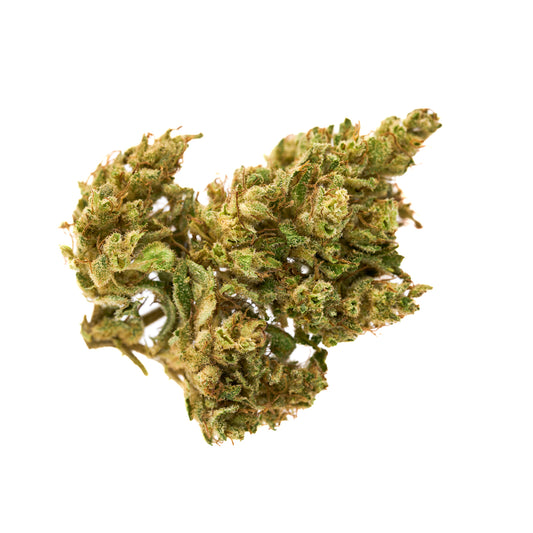
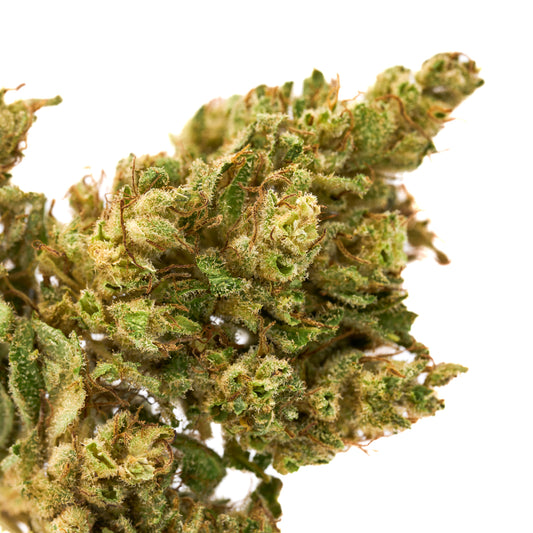
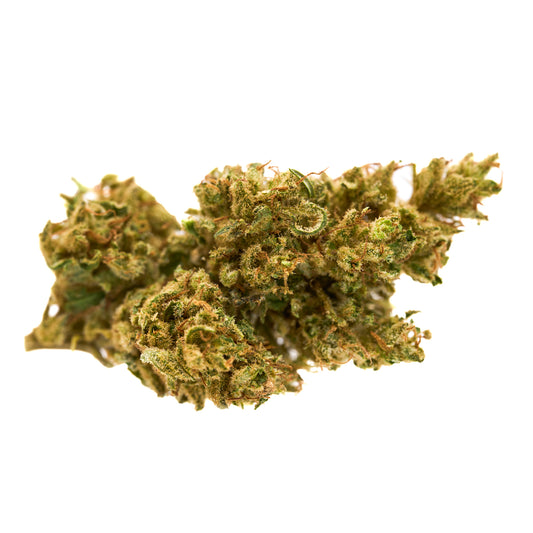
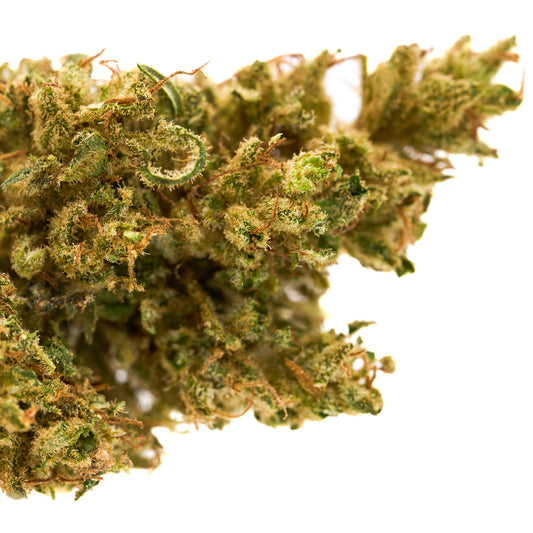
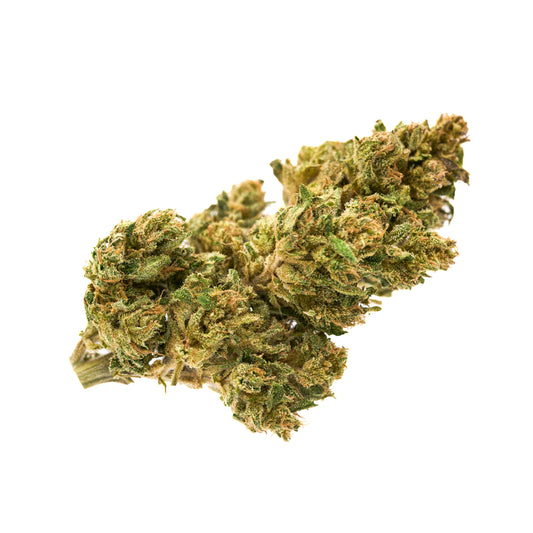
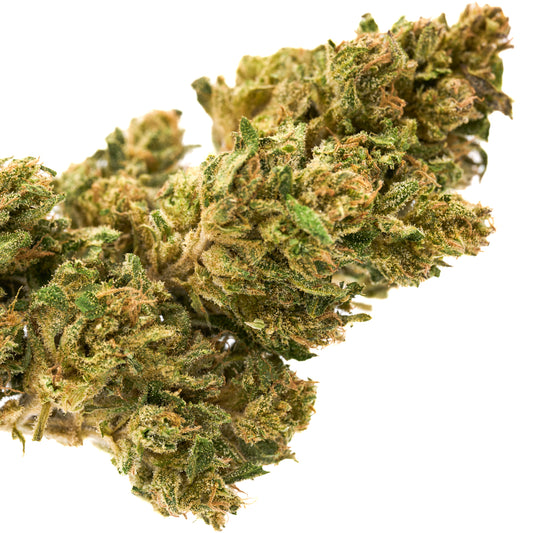



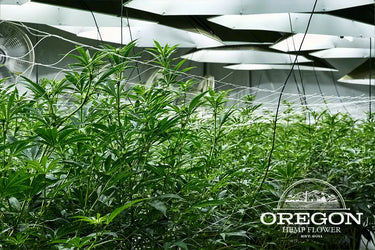

Leave a comment
Please note, comments need to be approved before they are published.